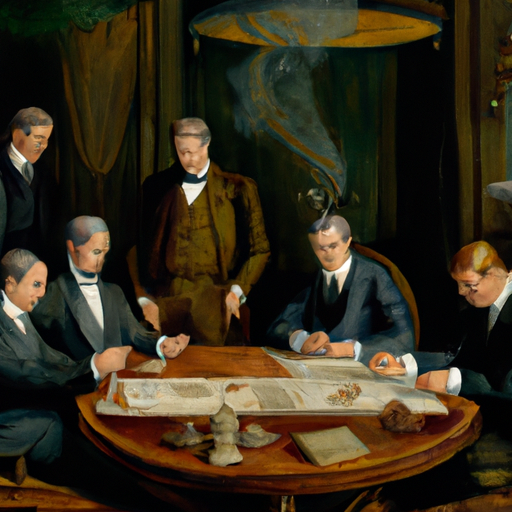Schedule a Strategy Session Today
The Evolution of Fed Announcements: From Whispers to Microphones; From Jekyll Island to 60 Minutes

In the world of finance and economics, the Federal Reserve's announcements hold immense sway, capable of sending markets into a frenzy or calming investor nerves. However, this wasn't always the case. The Fed's communication strategy has evolved significantly over the years, reflecting changes in transparency, accountability, and the need for clear guidance in monetary policy.
Silent Beginnings: The Era of Secrecy
In the early days of its existence, the Federal Reserve operated under a veil of secrecy. Formed in response to the financial panics of the late 19th and early 20th centuries, the Fed was initially shrouded in mystery, with little to no public communication regarding its decisions or intentions. This opacity was intentional, as policymakers believed that maintaining secrecy would allow for more effective control over monetary policy and financial markets.
Embracing Transparency: The Dawn of Press Conferences
As the global economy became more interconnected and financial markets grew in complexity, the need for transparency and clear communication from the Fed became increasingly apparent. In 1994, under the leadership of Chairman Alan Greenspan, the Federal Reserve began to hold occasional press conferences following its policy meetings. These press conferences provided an opportunity for Fed officials to explain their decisions and provide insight into the central bank's thinking, marking a significant shift towards greater transparency and accountability.
The Era of Follow-up Interviews: Enhancing Communication
In recent years, the Federal Reserve has further refined its communication strategy, recognizing the importance of providing clear and consistent guidance to financial markets and the public. Following the release of the Fed's policy statements and press conferences, Chairman Jerome Powell and other Fed officials have engaged in follow-up interviews with prominent media outlets, like Powell's recent 60 Minutes interview, to elaborate on the central bank's decisions and address any lingering questions or concerns. These interviews serve to enhance communication, provide additional context, and ensure that the Fed's message is effectively conveyed to a broader audience.
From Jekyll Island to Wall Street: A Historic Connection

In understanding the evolution of the Federal Reserve and its communication practices, it's essential to recognize the historic significance of Jekyll Island. In November 1910, a secret meeting of just six men - influential bankers and financiers - took place on Jekyll Island, Georgia, laying the groundwork for what would eventually become the Federal Reserve System. The meeting and its purpose were closely guarded secrets, and the six men did not admit that the meeting occurred until the 1930s. This clandestine gathering, which included figures such as J.P. Morgan and Senator Nelson Aldrich, played a pivotal role in shaping the structure and function of the Fed, setting the stage for its subsequent evolution and impact on the global economy.
Fun Fact: Investors used to bet on interest rate changes based on the size of Fed Chair Alan Greenspan's briefcase
The idea was that a larger-than-usual briefcase indicated a possible shift in rates, as Greenspan might need more documents to justify a hike or cut. When questioned about this "Briefcase Indicator," Greenspan humorously debunked the notion, stating “Not at all. Whether my briefcase was fat or thin depended on whether or not my wife made me lunch that day." This anecdote highlights the fascinating ways in which market observers attempted to decipher the actions of one of the most influential figures in monetary policy.
Conclusion: Balancing Transparency and Effectiveness
The journey of the Federal Reserve's communication strategy reflects a broader trend towards increased transparency and accountability in central banking. From its early days of secrecy to its current practice of holding press conferences and follow-up interviews, the Fed has continuously adapted its approach to meet the evolving needs of financial markets and the public. As we look to the future, the challenge for the Fed will be to strike the right balance between transparency and effectiveness, ensuring that its communication practices continue to foster confidence and stability in the global economy.